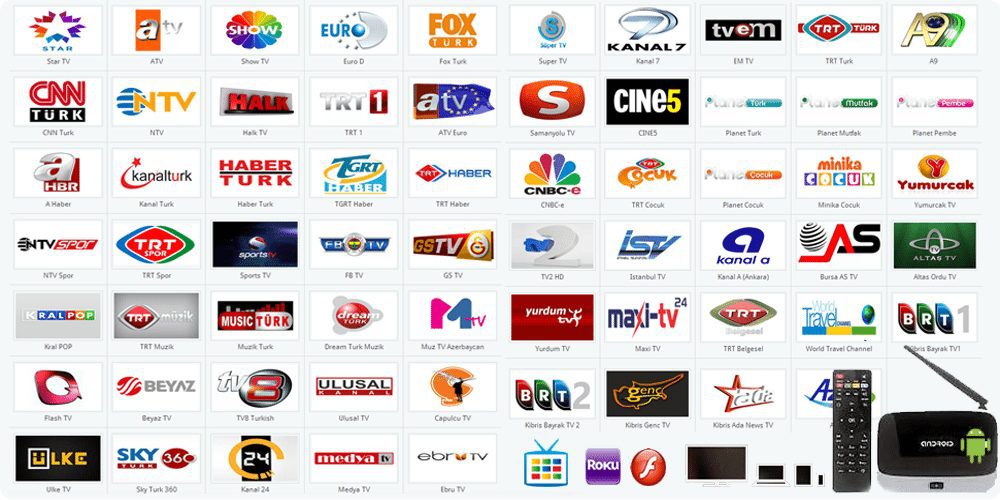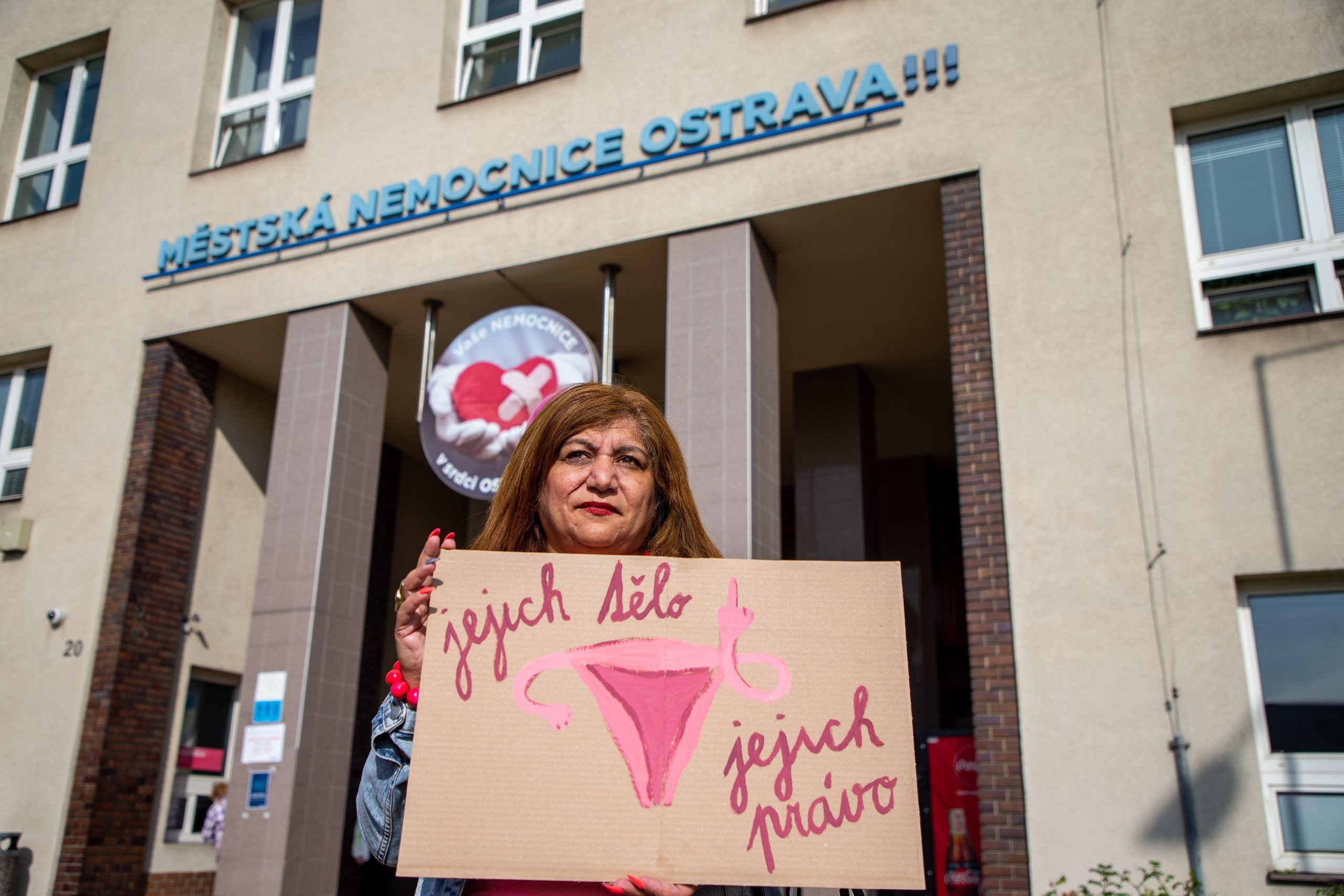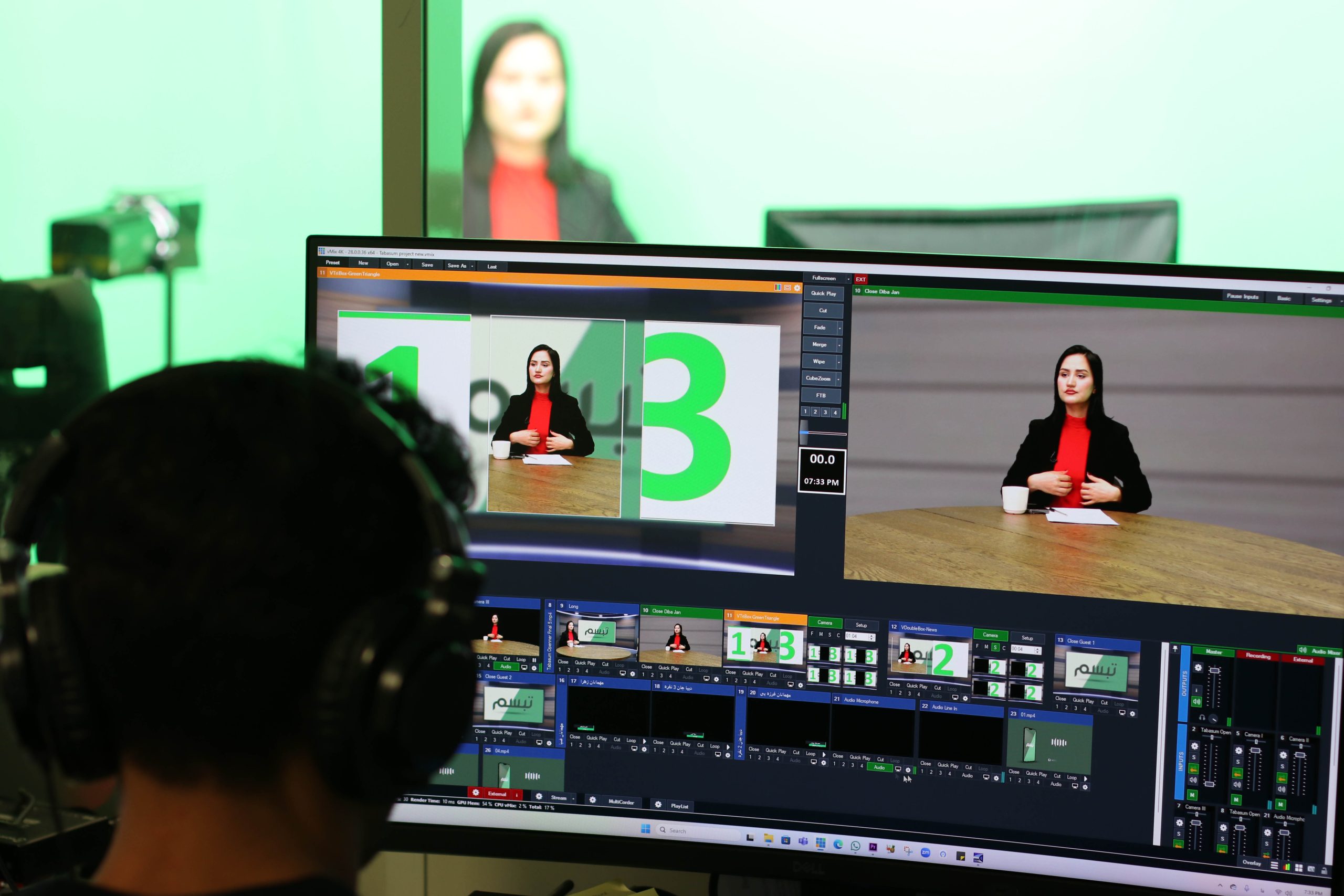[vc_row][vc_column][vc_row_inner][vc_column_inner][vc_single_image image=”102216″ img_size=”full”][/vc_column_inner][/vc_row_inner][vc_column_text]Visitors to Eurasian countries — Turkey, Russia, Ukraine or, to a lesser extent, Azerbaijan — might be impressed by the sheer number of domestic television channels that offer news programming.
The average TV viewer in Turkey flipping through the local channels is treated to an alphabet soup — atv, Kanal D, NTV, STV, interspersed with FOX TV, CNN Türk, public broadcaster TRT and countless others — all employing a vast number of journalists and purporting to keep the viewers abreast of events shaping the domestic and global agenda. The broadcasts are slick: filled with chyrons, attention-grabbing graphics, remote reports, breaking news, heated exchanges between talking heads and all the other trappings of the modern-day 24-hour news cycle.
Watching the lively debates hosted by TV personalities, who exude an air of professionalism and discernment, with or without live audiences nodding in acquiescence or registering disapproval, viewers may be given the impression that they are being exposed to a wide range of opinions in a vibrant, competitive media market.
But does this wealth of channels translate into pluralism of points of view?
“Certainly not,” says Esra Arsan, journalism scholar and former columnist for Turkey’s Evrensel, one of the remaining newspapers supplying alternative news and commentary left in the country. “In Turkey, there’s no pluralistic media environment. The Turkish media have never been pluralistic in the true sense of the word, but at least there were once mechanisms that allowed for the voices of the right, left, mainstream and fringe wings to be heard, especially, on small media groups occupying the niche space,” she says, citing the formerly independent Turkish-language media, their Kurdish-language counterparts and those of other minority groups.
Arsan described the massive media reorganisation that took place in parallel with the rise of president Recep Tayyip Erdogan’s AKP party since 2007. “It was characterised by replacing the old media owners with the new ones with close ties to the government, and exercising total control over them, especially, in big media,” she adds.
During the Erdogan-inspired restructuring of the media, professional journalists and newsroom managers were forced out or jailed, Arsan says. The replacement managers left a lot to be desired. “Many of these people are uneducated, have no idea of journalistic ethics or professionalism, they’ve become the mouthpieces for the government”. She points out that more than 3,000 professional journalists who were working prior to 2007 are now jobless.
“Nowadays, no matter how many television broadcasters there are in Turkey, we can say the government exercises control over 90 percent of them,” says Ceren Sözeri, a communications faculty member at Istanbul’s Galatasaray University, citing a recent study conducted by Reporters Without Borders.
“Among the channels not under government control were stations belonging to Doğan Group, such as Kanal D and CNN Türk. Very recently, it was sold to Demirören Group, a conglomerate with close ties to the government,” Sözeri says.
Among the TV channels that are still able to provide diversity in the face of the pro-government news she tentatively cites FOX TV, Tele1 and HalkTV, the latter being associated with the CHP, the main opposition party. “With these exceptions, almost all other remaining channels work in conformity with the government, we can say we have an environment completely devoid of diversity,” Sözeri says.
Driven by Erdogan’s efforts to build a single-party regime, this media reorganisation pursued the goal of controlling information disseminated in the country. Buffered by the concurrent changes to the constitution and legal reforms, the jailing of journalists started to rise as well.
If this sounds familiar, that’s because it should: “What [Russian president] Putin did since he came to power, was establish control over influential media outlets that had the capacity to form public opinion, firstly, TV,” notes Gulnoza Said, Europe and Central Asia research associate at the Committee to Protect Journalists.
“All federal channels are very tightly controlled by the state now, with the instructions sent to the heads of TV companies on how to report on certain situations. It’s very clear that anybody who appears on your screen on a federal channel in Russia knows how they can and cannot speak about important and critical issues like Ukraine and Syria,” she says noting the two hot-button issues around Russia’s ongoing military involvement abroad.
According to the latest numbers released by the Media and Law Studies Association, a Turkish non-profit that offers legal protection to the rising number of journalists who find themselves in the crosshairs of the government, with 173 journalists in jail, Turkey currently holds the dubious title of the regional leader.
With 10 journalists currently in jail, according to a CPJ report, Azerbaijan is a distant second in the region, and number one among the former Soviet nations. Russia has five, according to the same report.
In addition to the state-owned AzTV and Ictimai (Public) TV that was created in 2005 as part of the country’s commitments before the Council of Europe, there are four nationwide broadcasters in Azerbaijan: Atv, Xazar, Space and Lider.
Azerbaijani media rights lawyer Alasgar Mammadli says that all these channels fail to inject diversity into the discourse in his country because no outlet presents a balanced viewpoint.
“The media only cover the government’s point of view. Considering the realities of Azerbaijan where the majority of information is obtained through TV and radio, we not only don’t have access to objective information, there’s no room for pluralistic news, we only have one expression, one colour.” He calls it “propaganda coming from the government that is disseminated to a large swath of the public,” noting that the internet is the only place offering some semblance of pluralism.
“In the entire region, I’d probably not name a single country where we’ve seen a positive trend, with the slight exception of, surprisingly, Uzbekistan,” says CPJ’s Said, noting that with the new administration of president Shavkat Mirziyoyev there has been a process of liberalisation, and for the first time in more than two decades, there are no journalists in jail.
Said notes that another negative trend is very visible in Ukraine since Russia annexed its region of Crimea in 2014. “At the time, after the Euromaidan [the wave of civil unrest that resulted in the government change], the Ukrainian media space had been relatively free for some time, but right now what we see is that the authorities are trying to control the flow of information, and the attempts are very visible and quite strong.”
Said explains that Ukrainian journalists are facing obstacles practically every day, stressing that she is not talking about Russian journalists trying cover the news from Ukraine. “The [Ukrainian] Ministry of Defense is making it extremely difficult for local journalists to get the so-called ‘military accreditation’ that would allow them to go to the eastern part of the country and cover combat operations,” says Said, adding that one of the newly imposed requirements is that the journalists applying for accreditation must provide previously written stories about the conflict.
“I would say it is censorship, because the government is trying to control the way the journalists cover the conflict,” she points out.
Galina Petrenko, director of Detector Media, a Ukrainian media watchdog organisation, disagrees: “There is pluralism [in Ukraine]. The economic interests doubtless manipulate the discourse, as the largest media belong not to the government, but to oligarchs, formidable businessmen conjoined with the power. That’s why business interests of each of these owners are reflected in the content of the media they own.”
Ukraine’s TV and radio council puts the number of the national TV broadcasters at 30, in addition to 72 regional channels. The country counts 120 satellite TV channels.
Maria Tomak of the Kyiv-based Media Initiative for Human Rights in Kyiv says that oligarchic ownership of the media has implications for pluralism. “We do have the freedom of speech, in comparison with Russia and other nations, but we do have limitations that are sometimes very tricky and are related to the economic factors, since we don’t have all that many independent media.”
She says that there is more than one “clan” or “group of influence” engaged in a struggle for power and influence. This conflict more or less preserves a tenuous pluralism. “When they start ‘oligarchic wars’, TVs show documentary footage or run news stories that clearly indicate who calls the shots at a particular channel. They mudsling or broadcast expose-style programmes, but it’s hard to call them objective, and it is hard to call it pluralism in its ideal sense.”
Bad examples are contagious
“The countries of the region quite often and quite speedily learn from each other’s negative experience,” says Mammadli. “For instance, Azerbaijan started officially blocking sites in February of 2017 through amendments to legislation. Before that, it was prevalent in Turkey and Russia.” He adds that the majority of the blocked sites are related to the alternative news sources. Mammadli puts the number of the internet sites and resources blocked in Russia at more than 136,000.
“We live in a region neighbouring Russia and Turkey and share ties with them, which speeds up the migration of these experiences into our country. Thus, the negative changes or attitudes towards human rights or the tendencies to limit freedom and rule of law in these countries can come to our country very fast,” he says. “It turns into a competition with the following logic, ‘the neighbor did it and got away with it, so let me try and see what happens’.’’
CPJ’s Said notes that these traditionally autocratic regimes keep one eye on the USA, which has been regarded as the flagman of press freedom and liberal democracy for decades. “Everybody used to look up at the USA, but since Trump was elected president, you know his routine, he wakes up in the middle of the night and starts tweeting, attacking journalists and critical media, calling everything they produce ‘fake news’.”
In her view, this definitely affects global press freedom, as dictators and elected officials with autocratic tendencies step up their pressure on critical media outlets in their own countries.
Arsan says of the effects of this phenomenon in Turkey: “If the dictator says the news is wrong or fake, even if you bring the most truthful news to them, be it on the issue of the human rights, war, the economy, the people will tend to disbelieve you. This makes the job of a journalist that much harder, because we chase the truth, and we see the tendency to disbelieve or outright denial on behalf of the audience.”
“Vulnerable stability” as the dangerous consequence
The shrinking plurality in the media throughout the entire region leads to a somewhat distorted processes of decision making during elections, says Said.
“The lack of plurality, which is a lack of democratic process or access to such, does, in general, make any society more vulnerable. If we look at the situation inside any country, also, when you look at dictators like Putin, you may get an impression that their power is very stable and strong. But that’s a very vulnerable stability,” she adds, explaining it with the fact that it is, ultimately, one person making decisions for the entire country of millions of people.
“If you look at what Erdogan has been doing for the last 10 years or so, he has been pursuing the policy of turning Turkey into a regional leader and suppressing any alternative voice. Same with Putin and his foreign policy in Ukraine with the annexation of Crimea, or Syria. In a way, it is back to the USSR, where people could discuss things only among their family or close friends in their kitchens.”
In the opinion of Arsan, as media plurality shrinks, societies become increasingly unaware of crises, which might set them on a path to disintegration. “This is the process of criminalising political discussion,” she said. “This is common in many Eurasian countries, as well as in the Middle East. These are the dictatorships without an end. People don’t want to go to the ballot boxes anymore because they don’t think they can effect change.”
For Mammadli, the people’s inability to access true information and analyse it means that they are contending with mass propaganda. From this point of view, the societies where people don’t know the truth will base their reactions on a lie, he says.[/vc_column_text][/vc_column][/vc_row][vc_row][vc_column width=”1/4″][vc_column_text]
Media Freedom
[/vc_column_text][/vc_column][vc_column width=”3/4″][vc_column_text]
Media freedom is under threat worldwide. Journalists are threatened, jailed and even killed simply for doing their job.
Index on Censorship documents threats to media freedom in Europe through a monitoring project and campaigns against laws that stifle journalists’ work. We also publish an award-winning magazine
Learn more about our work defending press freedom.[/vc_column_text][/vc_column][/vc_row][vc_row][vc_column][vc_column_text]
Mapping Media Freedom
Index on Censorship’s project Mapping Media Freedom tracks limitations, threats and violations that affect media professionals in 43 countries as they do their job.
[/vc_column_text][vc_raw_html]JTNDaWZyYW1lJTIwd2lkdGglM0QlMjI3MDAlMjIlMjBoZWlnaHQlM0QlMjIzMTUlMjIlMjBzcmMlM0QlMjJodHRwcyUzQSUyRiUyRm1hcHBpbmdtZWRpYWZyZWVkb20udXNoYWhpZGkuaW8lMkZ2aWV3cyUyRm1hcCUyMiUyMGZyYW1lYm9yZGVyJTNEJTIyMCUyMiUyMGFsbG93ZnVsbHNjcmVlbiUzRSUzQyUyRmlmcmFtZSUzRQ==[/vc_raw_html][/vc_column][/vc_row][vc_row][vc_column][vc_basic_grid post_type=”post” max_items=”12″ style=”load-more” items_per_page=”4″ element_width=”6″ grid_id=”vc_gid:1534691928040-02d2971b-12c6-8″ taxonomies=”9044″][/vc_column][/vc_row]





